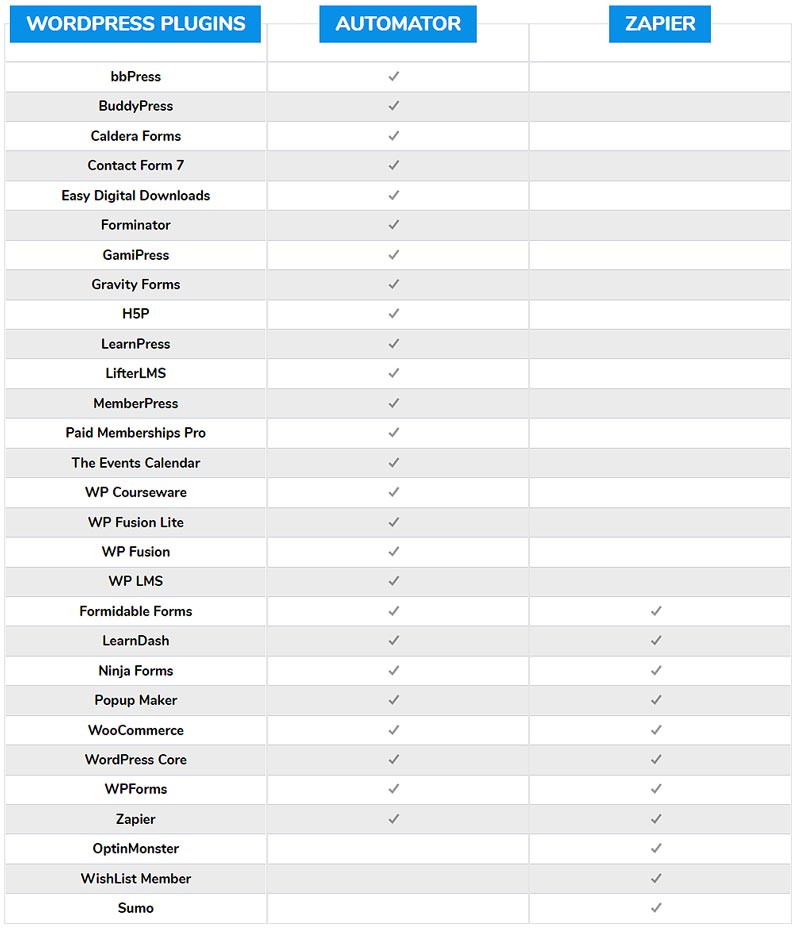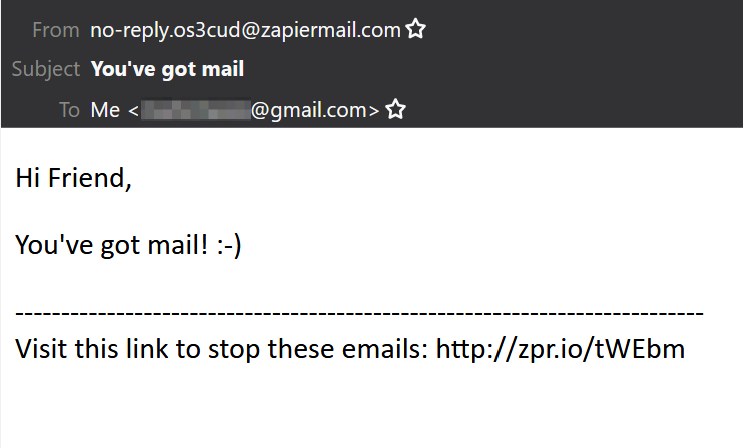Automator 6.4 : Publicités Facebook, Bluesky et puissantes améliorations de l'apprentissage en ligne
Uncanny Automator 6.4 introduit les publicités Facebook Lead, Bluesky et des tonnes de nouveaux déclencheurs puissants et…
Making a business website usually means having a lot of moving parts work together. Just think of some of the things that your site would need to support your business. You’d need the ability to create accounts, provide a shopping cart for purchases, a way to add people to a mailing list, forms for contacting you, and more.
The beauty of creating your site with WordPress is that it’s open and flexible. You can add all of these little features, and with its thousands of plugins, there’s almost a product for every need. You want everything to be seamless on the site though and to give users a consistent and cohesive experience, and to do that you need to make sure all of the pieces on your site work together. Let’s take a look at how this might work on a website for a photography business.
For starters, you’ll want an image gallery for your photos. Then, it would be super to have a blog, so you can share the stories behind the photographs and give free tips. What about a contact form? People need to reach you, so there must be a form that can take submissions and notify you. How about an events calendar to schedule your exhibitions? Next thing you know, your customers are asking you for a newsletter and want you to have a forum for discussions. Eventually, you decide to sell your photography through your site and even offer online photography courses.
As you can see, as your business expands so does your website. Your site evolved from one component (the image gallery) to a total of seven. Luckily, WordPress has multiple plugins for all of these components, so it’s easy to drop them in and start using them! At the time of writing, there are over 55,000 WordPress public plugins (and many more private, paid plugins) available to help you customise and extend your website.
WordPress has plugins for:
Now the question is, can all these plugins work together in a seamless and automated way? Can they send data to other sites, so you can manage your mailing list in a CRM and order details in your favourite accounting software? That’s where automation tools like Uncanny Automator and Zapier can help. They both excel at integrating applications and automating repetitive and tedious tasks.
In this article, we’ll cover how Automator and Zapier are different. The more you understand about the differences, the better you can leverage their respective strengths to make your life easier.
The biggest key difference is that Uncanny Automator runs inside WordPress and connects plugins together (and to external sites and apps). Zapier is a cloud application, managed and hosted by a third party, that connects more than 2,000 apps together.
Think of it (Uncanny Automator) like Zapier but specifically for WordPress plugins. —The Events Calendar
Here’s a list of key advantages that Automator has over Zapier:

Note that the chart above covers native integrations, not integrations via additional add-ons.
Having thousands of integrations may sound great. But, it’s more important to have the actions and triggers you need to run your business.
Using our photography site example, here’s a real-world scenario to illustrate this.
We want to send out an Events Calendar invitation for an upcoming photo editing webinar to anyone who:
You might have noticed that this is a multi-trigger recipe or workflow. We already mentioned that Zapier can’t do more than one trigger in a single Zap. Furthermore, Zapier doesn’t integrate with the Events Calendar and EDD plugins.
So, Automator is the logical (and only) choice here unless you want to write a lot of integration code.
Now, let’s take care of your webinar participants after the webinar is over. When the webinar is over, we want to:
Let’s say you used Zoom for your webinar, and you’d like to send a follow-up email the day after the webinar. Here’s where you can get Zapier to help. You can create a delayed Zap to email the survey link.
Why don’t we give special attention to the participants who filled out the survey? Zapier doesn’t support Forminator. That means you’ll need Automator to reward your survey submitters.
Using Automator, when a participant completes your Forminator survey, you can:
Again, Automator has the advantage here. Uncanny Automator supports WP Courseware and BuddyPress. Zapier does not. If you’re running Uncanny Automator Pro, you can simply make a recipe with a Forminator trigger that:
We cover this type of workflow in more detail in our Connect multiple WordPress sites together blog post.
Before moving on, here’s a quick word on using Zapier’s new built-in emails. Just because Zapier can now natively support emails doesn’t mean you should use them for your public-facing emails. Unfortunately, the Zapier email system screams system-generated (i.e., the dreaded no-reply) emails!

Automator uses the WordPress admin email address as the default sender. With only a point and click, we can add the recipient’s name and a reset password link to an Automator email notification.

There were over 4 billion reported data records breached in 2019. That’s more than a 50% increase from 2018. Last year, the Capital One breach alone exposed 106,000,000 financial records because of an unsecured Amazon cloud S3 bucket.
Zapier uses S3 buckets on Amazon’s AWS servers. According to their privacy statement, Zapier can keep your data for several months or as long as the data needed. For sites that want to keep their user data restricted to other companies, this is another big concern.
Using Zaps means you’re exchanging your data between Zapier and the third-party applications that your workflow integrates with. This kind of data exchange is affectionately called “phoning home”.
Automator recipes, on the other hand, don’t need to phone home because they’re already there. All your plugins, including Uncanny Automator, are installed and activated on your WordPress site.
Data is shared internally—there’s no need to go outside with Automator. Unless of course, your recipe uses Zapier or webhooks to connect with external apps.
That’s a lot to take in. Let’s summarise the important takeaway points:
Which is better, Automator or Zapier? That depends on your needs.
When it comes to automating your workflow for your WordPress website, Uncanny Automator offers direct access to many popular WordPress plugins. Going outside of your site by using Zapier to integrate two plugins installed on your site wouldn’t be as efficient if you just need to connect things inside WordPress.
Zapier offers far more integrations, and the support for conditions and delays is compelling. For some simple recipes and use cases, using Zapier alone may be the best solution.
At the end of the day, however, there is no need to choose between the two products. Uncanny Automator integrates seamlessly with Zapier, allowing the best of both worlds and support for dozens of WordPress plugins and thousands of non-WordPress apps.

Uncanny Automator 6.4 introduit les publicités Facebook Lead, Bluesky et des tonnes de nouveaux déclencheurs puissants et…
Nous utilisons des cookies pour améliorer votre expérience sur notre site. En utilisant notre site, vous acceptez l'utilisation des cookies.
Gérez vos préférences en matière de cookies ci-dessous :
Les cookies essentiels permettent des fonctions de base et sont nécessaires au bon fonctionnement du site Web.
Les cookies statistiques collectent des informations de manière anonyme. Ces informations nous aident à comprendre comment les visiteurs utilisent notre site web.
Les cookies marketing sont utilisés pour suivre les visiteurs sur les sites web. L'objectif est de diffuser des publicités pertinentes et attrayantes pour chaque utilisateur.
Cet article a 0 commentaire